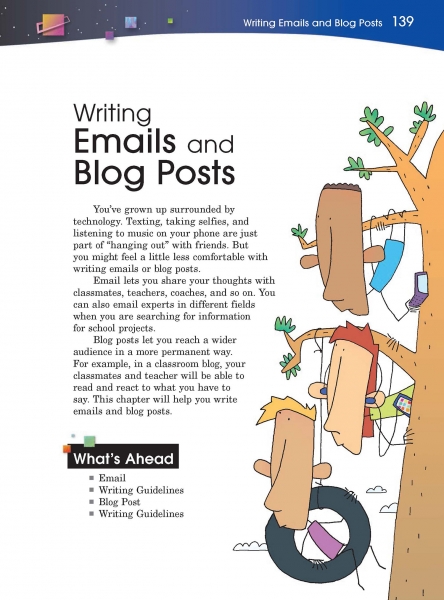Page 139 from

Start-Up Activity
To introduce this chapter, display some sample emails and blog posts. Ask students about their experiences with these two forms and how they might use them in school and in other situations. Then read and discuss page 139.
Encourage students to write emails to you whenever they have questions or concerns about their coursework. Also, if you don't have one already, consider starting your own classroom blog. Blogging is a great way to inspire a passion for writing, as it provides students with an immediate, interactive, and authentic audience.
Think About It
“Blogging is to writing what extreme sports are to athletics: more free-form, more accident-prone, less formal, more alive. It is, in many ways, writing out loud.”
—Andrew Sullivan

Start-Up Activity
To introduce this chapter, display some sample emails and blog posts. Ask students about their experiences with these two forms and how they might use them in school and in other situations. Then read and discuss page 139.
Encourage students to write emails to you whenever they have questions or concerns about their coursework. Also, if you don't have one already, consider starting your own classroom blog. Blogging is a great way to inspire a passion for writing, as it provides students with an immediate, interactive, and authentic audience.
Think About It
“Blogging is to writing what extreme sports are to athletics: more free-form, more accident-prone, less formal, more alive. It is, in many ways, writing out loud.”
—Andrew Sullivan
